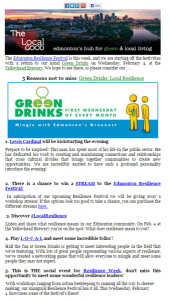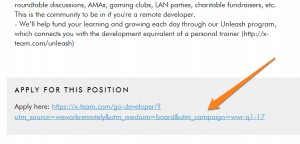Here’s how small business leaders can position their employees to thrive in a post-pandemic operational reality.
The recent pandemic and associated economic fallout were especially challenging for small and medium-sized businesses (SMBs). The Washington Post estimates that more than 100,000 small businesses have permanently closed, and overall revenue plummeted by as much as 52 percent.
At the same time, business leaders navigated a global health crisis, an unprecedented transition to remote work, and continued economic uncertainty.
Now, as leaders begin planning for a post-pandemic operational reality, they have new challenges ahead, and meeting those demands will, in many ways, determine their success moving forward. This is especially true as remote work becomes a permanent fixture of the SMB work experience. According to one survey of SMB owners, 57 percent expect to continue offering remote work as a long-term solution as everything from employee preference to shrinking overhead costs makes this a compelling next step for business owners.
Meanwhile, 41 percent of SMB employees report feeling “burned out, drained, or exhausted from their work,” and nearly 1 in 4 described feeling “down, depressed, or hopeless often.” In the long-term, sustainably successful SMBs are predicated on thriving employees. That’s why SMB leaders need to look internally, evaluating their teams’ health and well-being to develop intentional strategies to help them thrive.
In this environment, how can leaders foster healthy teams while capitalizing on the benefits of a hybrid workforce? Here are five simple steps that can positively impact employees, allowing leaders to cultivate thriving teams and organizations.
#1 Restore Work-Life Balance
As people packed up their desks and relocated to their kitchen tables, living rooms, and couches, many leaders feared that productivity would plummet. They worried that people would take long lunches, indulge in Netflix binge sessions, and reject workplace rigor when working remotely.
In reality, the pandemic eliminated any remaining remnants of work-life balance as remote workers embraced a maximalist approach to the always-on ethos that too often dominates workplace culture.
For example, it’s estimated that remote workers during the pandemic increased their workday by three hours, adding nearly two full days to employees’ already busy schedules. What’s more, a research paper by the National Bureau of Economic Research found a significant uptick in the number of meetings, emails, and calendar events during the pandemic. According to Jeffrey Polzer, a Harvard Business School professor and an author for this latest report, “People will start burning out if we don’t rethink how they’re spending their time.”
Restoring work-life balance relies on leadership. For instance, it might feel productive for leaders to clear their inboxes on the weekends, but these behaviors undermine stated priorities, demonstrating that always-on is acceptable or even expected. Employees won’t make meaningful changes if they are worried about losing their jobs or losing opportunities to their constantly engaged peers. Leaders need to reset and reestablish workplace norms regarding communication, collaboration, and engagement.
In response, SMB leaders can create and communicate meaningful differences between rigid and flexible responsibilities, empowering employees to determine personal work habits that optimize their own productivity and create emotional separation between work and home, something that is uniquely challenging when their physical spaces are the same.
#2 Value Workers’ Time
Workers were stretched well beyond their capacity during the pandemic. While employees won’t always have to simultaneously serve as on-demand employees, improvisational homeschool teachers, and physical distancing navigators, their time is still valuable.
To promote healthy, productive teams, SMBs need to find ways to tangibly value their work times, at once maximizing their capacity and encouraging their longevity. To achieve this, many organizations are relying on their employee monitoring initiatives implemented during the remote work transition to create data-driven efficiencies that support their teams.
For instance, 4 in 10 remote workers identify extended periods of uninterrupted time as a critical component of a productive workday. Unfortunately, constant Slack interruptions, increased meeting frequency, and other responsibilities make this more challenging. That’s why Microsoft harnessed employee data analytics to best value their workers’ time. In doing so, the company learned that teams were most productive during a three-hour window each morning, and it requested that managers avoid scheduling meetings during this window of optimal productivity. These efforts allow workers to best fulfill their responsibilities, increasing the company’s position while tangibly promoting work-life balance.
In addition, data derived from employee monitoring can support other efficiencies efforts, including process standardization, communication best practices, scheduling norms, and industry-specific improvements.
Simply put, when SMBs value their workers’ time, they support the company’s operational priorities and their employees’ well-being, two business facets that are inextricably linked.
#3 Set Outcomes-based Expectations
One of the core culprits of today’s always-on workplace mentality is constant activity that masquerades as work. Emails, Slack notifications, meetings, collaborative sessions, and debriefs each have the appearance of productivity without actually helping people excel at their core responsibilities.
However, with many SMBs using activity monitoring to oversee their digital projects, workers can feel compelled to demonstrate their value using arbitrary activity metrics rather than business-driven outcomes. SMB leaders reinforce these behaviors when measuring this activity or failing to set clear employee expectations.
In other words, when success is a data-driven distinction, workers want to know when they are measuring up and when they are falling behind. Therefore, set outcomes-based expectations that recognize tangible results while maximizing employees’ freedom and flexibility as they complete these tasks. While these metrics will be unique to every company, their selection and implementation can help foster happier, healthier, more flexible teams.
#4 Encourage Time Off
Even before the pandemic, many workers were leaving their allotted personal and vacation time unused. One study found that Americans forfeited a record number of vacation days in 2019, leaving half of their paid time off unused each year.
However, pandemic-related travel restrictions, economic uncertainty, and other concerns prevented even more workers from taking time off in the past year. This is problematic for SMBs and their workers. According to the Harvard Business Review, “Research shows the benefits of vacations to employee productivity and the economy — both of which are currently under threat. Unused vacations have cost U.S. businesses $ 224 billion a year.”
SMBs can reverse this trend by actively encouraging employees to take personal time away from the office. In a post-pandemic environment, that might mean:
- automatically rolling over unused personal days from last year
- instituting vacation day minimums that require all team members, including leaders, to take a break
- providing incentives for people to take time off
- modeling the importance of vacation time
- reducing friction for requesting and approving leave.
Ultimately, SMBs need to give their workers explicit and implied permission to take time off. Align policy with culture, knowing that when team members feel valued, respected, and productive, they also feel comfortable taking time away from the office.
#5 Recognize and Communicate Value
Employees are one of the most valuable assets for any SMB, and organizations have an operational imperative to regularly recognize and communicate this reality. Unfortunately, many SMBs miss the mark on this priority. A Gallup survey, only one in three workers strongly agree that “they received recognition or praise for doing good work in the past seven days.”
Employee recognition is a low-cost high-reward opportunity for SMBs to promote healthy teams. People want to feel valued and appreciated. They want to know that they are doing good work and that their efforts are furthering organizational priorities in a meaningful way.
For SMBs managing hybrid teams, these efforts are even more important. Remote workers often feel disconnected from on-site teams and activities. An employee well-being survey found that more than 60 percent of hybrid workers feel less connected to their on-site peers, creating a relational chasm between these teams that can have long-term negative consequences for company culture.
Whether employees are working remotely, returning to the office, or embracing a hybrid arrangement, SMB leaders must recognize excellent work. These efforts might include:
- public recognition
- private praise
- award ceremony
- monetary achievement
- paid time off
- meeting callout.
There are endless ways for SMBs to recognize and communicate value, and it’s a critical part of developing and sustaining thriving teams.
Conclusion
More than a year after radically restructuring our workplace arrangements, it’s clear that remote work wasn’t the productivity pit that many leaders feared. This is great news for small and medium-sized businesses (SMBs) looking to embrace this format for the foreseeable future. By most metrics, what Time Magazine once described as “the world’s largest work-from-home experiment” has been a resounding success.
Now, as SMBs plan for a post-pandemic work environment, they need to give attention to their teams, ensuring that they are healthy, happy, and effective.
Business & Finance Articles on Business 2 Community
(53)




